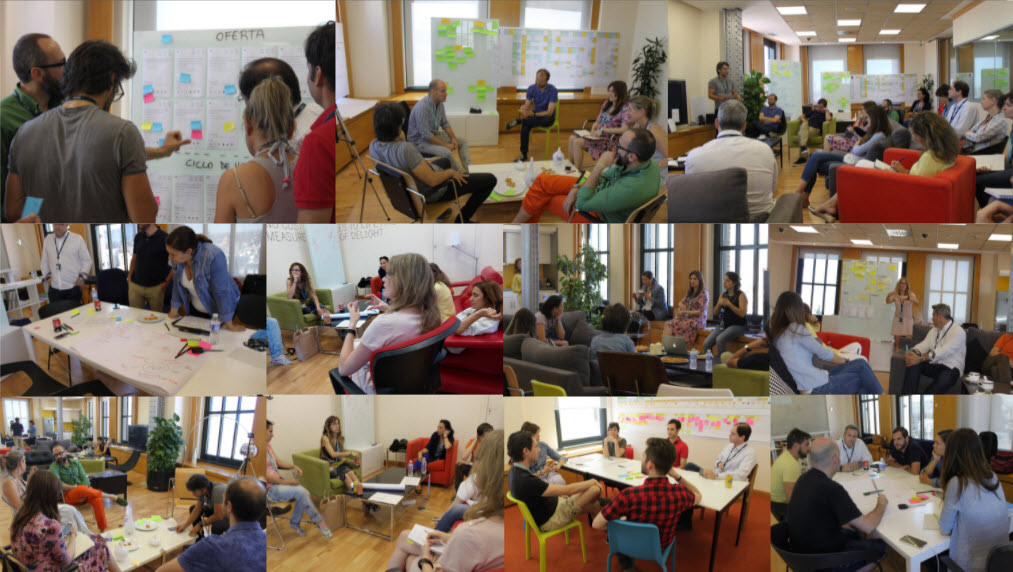Mobile Customer Experience Research
Customer research to improve mobile service and client relationship
Telefónica is one of the largest telecommunications companies in the world and one of the market leaders in Spain with Movistar. This project arose to investigate how to improve the Movistar's mobile service, and understanding how the customer relationship was through its multiple channels.

Telefónica is a big organization, therefore to tackle the project in the best possible way needed to be understood from the inside out. For that reason we started with an internal research of the stakeholders in direct contact with customers. To do that we identified the different sales touchpoints and see from the inside out how those channels worked.
After several rounds of interviews with representatives of these channels we had a better idea how different departaments and teams interacted with each other and how they interacted with customers. This helped to know who to turn to in case of any further inquiry that was required in the following part of the research with customers, but also to propose improvements in a more effective manner ifrom customers feedback.

We also studied each channel and created System Maps to understand how everything was connected around customers and potential new customers.

In the external research we applied diverse types of research technics in order to map the customer experience in the most accurate way and from different points of views. We carried out:
- Mystery shopping, both in sales call channel and in stores.
- Guerrilla interviews with customers and other mobile customers.
- Shadowing in stores to observe the attention to clients and listen complaints and other customer requests.
- Ethnographic interviews.

The feedback and observations from research helped us to identify the current most important painpoints of the experience. This took us to discover that the young segment of clients was the most dissatisfied and required more attention to cover their needs. We mapped the journeys for different kind of personas in different channels based in their consumption behaviors.

In the UX lab we built customer journey map stories based in the narratives provided from different young customers and non-customers. The UX team composed for 4 members, covered the whiteboards with notes to visualize easily the areas of opportunity and improvement in the different areas of the experience.


Among the multiple insights discovered, young people said that they didn't like to go to the physical stores (which confirmed what we observed in our visits) and that they felt the company didn't speak their language.
This brought up new conversations of all departments to be involved in a more integral way to talk about the offers and the experience provided to their customers. We worked internally in design and brainstorm workshops to bring possible solutions.

As a result of this process brought several action points to attract the young audience and improve the overall service:
- To work in more flexible offers targeted to their needs.
- To improve channels of attention.
- To speak more their language.
- Improve the precision of how the information of service plans are delivered.
- Increase the perception of value and quality of the service.
- Promote loyalty.


